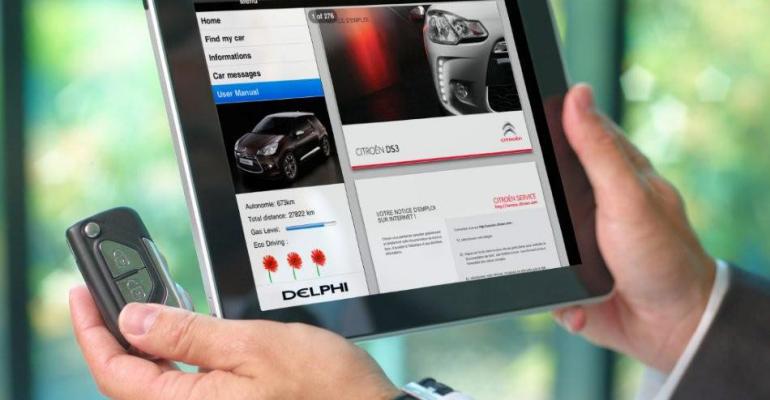NEW YORK – Delphi Automotive tells financial analysts here that new business orders are soaring.
Kevin Clark, chief financial officer, says the supplier has booked $60 billion in new business over the past three years.
Focusing on its role as a premium global automotive supplier, Delphi is especially active in electronics. “We deliver three computers a second and 1 billion lines of software per day,” says Jeffrey Owens, senior vice president and chief technology officer.
The company says it is well-positioned to meet the demands of today's vehicles, which have anywhere from 35 to 50 computers to control various systems.
Research and development is the heart of Delphi's drive to meet future technology demands by auto makers, senior executives tell analysts. The company already holds more than 6,000 patents but is investing $1.1 billion into R&D projects at its 15 major technical centers.
Perhaps the biggest challenge is fuel economy, because no one knows how the industry will meet the 54.5 mpg (4.3 L/100 km) fleet standard that will be required by 2025. Owens says hybrids and some level of electrification will be needed, but notes electric vehicles will see only minor market penetration in the next 10 years.
Other changes will include vehicle-mass reduction. Some of that can be achieved by substituting aluminum wires for copper, he says. Today's vehicles have one mile (1.6 km) of wiring and 300 connectors. Future vehicles will have 1.5 miles (2.4 km) of wiring, and that's a good reason for using aluminum instead of copper.
Delphi also is positioning itself for the increasing connectivity demands Generation Y buyers crave and for which they are willing to pay. The company forecasts 50% of all vehicles will have advanced wireless connectivity by 2020.
The supplier has transitioned from a high-cost manufacturer to one with a leading competitive position, officials say. About 91% of its employees work in low-labor-cost countries, trimming the average wage to less than $7.00 an hour.
Delphi has minimized its pension liabilities as well, and that has helped lower its break-even point to a 52 million-unit global market. Last year’s market was about 57 million, which is forecast to grow this year.
CFO Clark says Europe is the fastest-growing region for Delphi, which expects its revenue to climb 9.0% annually.
Delphi has a diversified business model and no longer is solely dependent on General Motors. Orders from GM account for only 19% of Delphi's business, with only 12% of that in North America. Overall, the U.S. supplies 32% of Delphi's revenue, Europe accounts for 45% and Asia, 16%.
Delphi's revenues topped $16 billion last year, and the company is generating a healthy cash flow, says Clark, noting it is studying ways of sharing some of that with its stockholders.
That could mean restoring a cash dividend or increasing stock buybacks to add shareholder value. If Delphi decides to start paying a dividend, next year would be the earliest, Clark says. But he insists no decision has been made.
Delphi presently is focused on high-margin vehicles. “We don't want to be in micro-vehicles,” says Rodney O'Neal, president and CEO. The company supplies only one car part, a speedometer, to the Indian-built Tata Nano. However, it is building relationships with auto makers in China, such as Great Wall.
Delphi also plans to provide solutions to the problem of driver distraction. O'Neal says his company recognizes smartphones are important to today's motorists, and is planning ways to help drivers stay connected and safe in their vehicles.



